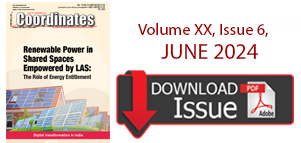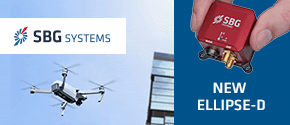| Galileo Update | |
Galileo Update
|
||||||||||
Europe launches first GALILEO satellites for smart navigation system
Europe has taken a major step in its history by launching the first two operational Galileo satellites with a Soyuz launcher to reach their orbit at 23.000 kilometres. From 2014, the new constellation will enable improved services ranging from more precise in-car navigation, effective road transport management, search and rescue services, more secure banking transactions as well as reliable electricity provision, which all rely heavily on satellite navigation technologies to work efficiently. The overall economic impact is estimated to be around 90 billion euro over the next 20 years.
Vice President Antonio Tajani, responsible for industry and entrepreneurship said: “This is a proud moment for all Europeans; today’s launch is proof of Europe’s prowess in the field of space activities. I now call on European industry and SMEs, to seize without delay the important economic opportunities offered by this system – get innovating now! European citizens can get ready, Galileo is about to be a part of our daily lives”.
http://ec.europa.eu
True3D™ Head Up Display & Navigation System wins European Satellite Navigation Competition 2011
This year’s best ideas and applications for the innovative use of satellite navigation were awarded recently. At the eighth annual European Satellite Navigation Competition (ESNC), Bavarian State Minister for Economic Affairs Martin Zeil honored the overall winner with a €20,000 cash prize. In addition, the winners for each of the 23 ESNC partner regions were selected from a record-setting 401 total submissions from 49 countries. The 2011 overall winner is the worlds’ first head-up display (HUD) to feature a remarkably small hardware package and a fully volumetric and conformal display engine, which superimposes objects on landscape imagery at distances from two meters to infinity with an exceptionally wide field of view. A digital 3D map, which is supplemented with augmented reality functions such as digital road signs or logos of local businesses, is projected directly onto the windshield without distracting the driver. The system already works well with GPS and can be operated with any accurate satellite guidance system.
Second place in the overall running was shared by Baden-Württemberg’s regional winner, Jens Rieder and his team from the Universität Heidenheim, for SkyAmps – a highly efficient, fully automatic wind power plant based on two kites; and the regional winner for Switzerland, Philipp Elbert and his team from the ETH Zürich and the Swiss company HESS AG, for AHEAD – a system designed to minimise the CO2 emissions of hybrid electric buses through a predictive energy management strategy based on precise positioning.
Third prize in the competition was also shared by two regional winners: Hesse’s Dr. Jörg Pfister of pwp-systems GbmH with PTbox, a robust positioning unit for public transport designed to offer enhanced attractiveness and reduced CO2 emissions; and Vladimír Vejvoda of Prague for Mobile Epileptic Fit Detector (MEFID), a mobile remote unit that can help save lives by rapidly detecting signs of an imminent epileptic attack in child patients.
www.galileo-masters.eu













 (1 votes, average: 1.00 out of 5)
(1 votes, average: 1.00 out of 5)



Leave your response!